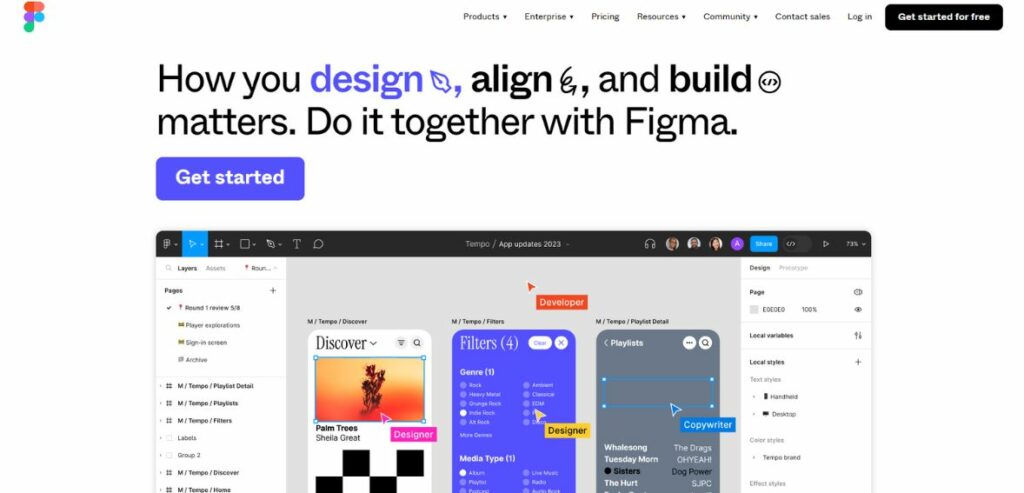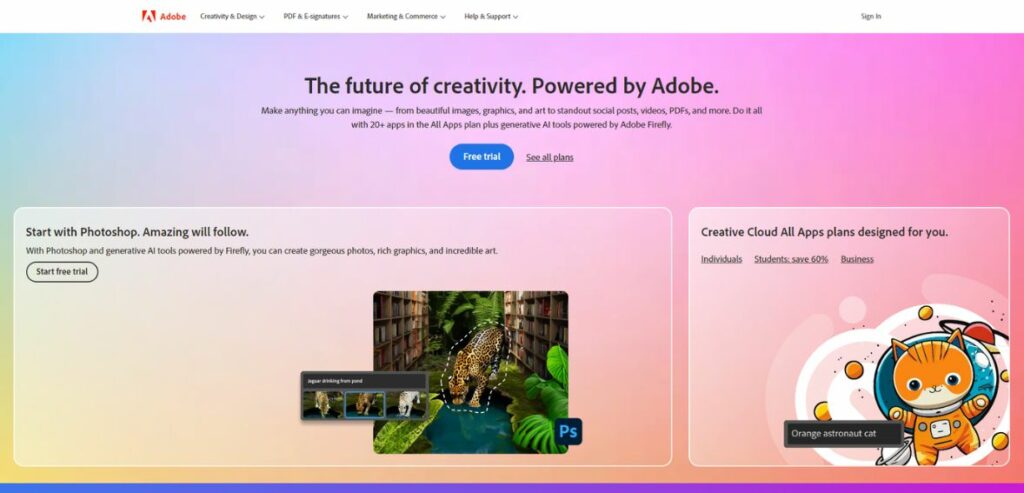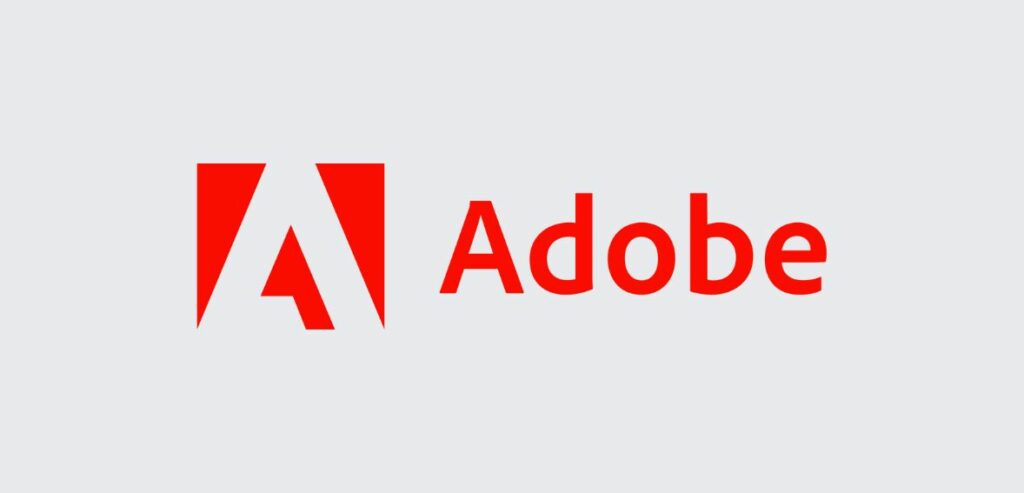Adobe has decided to cancel its planned acquisition of design software company Figma for $20 billion. The reason cited is the difficulty in getting approval from both the EU and the United Kingdom. The UK’s CMA (Competition and Markets Authority) had previously indicated that a significant part of Figma would need to be sold off, making the acquisition less appealing.
Last month, the European Commission had also expressed concerns about the deal. Additionally, company representatives had discussions with US officials in an attempt to salvage the agreement. This proposed acquisition, announced in September 2022, faced challenges due to increasing regulatory scrutiny over large tech companies acquiring potential competitors.
Key Takeaways
- Regulatory Scrutiny Halts Transformational Deal: Adobe’s $20 billion purchase of Figma was halted primarily due to regulatory challenges from the EU and the UK. Both countries raised concerns about potential anti-competitive effects, leading Adobe to abandon the deal.
- Gap Between Corporate and Regulatory Views: The cancellation underscores a significant divergence between corporate ambitions and regulatory oversight. While Adobe and Figma saw the merger as a means to enhance collaboration, regulators perceived it as a threat to competition and innovation in the design software market.
- Financial Implications and Market Reactions: Figma stands to benefit from a $1 billion termination fee, reinforcing its financial stability and potential for future growth, including a speculated IPO. Conversely, Adobe’s stock saw a modest rise post-announcement, indicating investor optimism despite the failed acquisition.
- Antitrust Regulators Score a Win: The collapse of the Adobe-Figma deal adds to a string of victories for antitrust regulators, who have been vigilant in preserving competition and innovation. The decision aligns with a broader trend of increased scrutiny over large tech mergers, signaling a proactive approach to maintain market diversity.
Figma’s CEO Expresses Regret Over Collapse of $20 Billion Deal with Adobe
Adobe has decided to cancel its planned $20 billion purchase of Figma, a design collaboration platform. The reason given is the challenges in securing approval from regulatory bodies in both Europe and the UK. This decision halts what was expected to be a transformative acquisition in the software industry.
While Adobe and Figma viewed the deal as a step toward enhancing collaborative creativity, regulators in multiple countries viewed it differently. To Figma’s CEO, Dylan Field, this highlighted a significant gap between corporate and regulatory perspectives on competition.
The collapse of this deal adds to a series of wins for antitrust regulators. Regulators raised concerns about Adobe’s dominant position in the design software industry when they opposed the acquisition of Figma. Buying Figma, which has gained popularity surpassing Adobe’s XD, made regulators anxious about potential stifled innovation if Figma couldn’t grow on its own.
Designers echoed these concerns after the merger announcement in September 2022. Despite these concerns, Adobe defended its position during the investigations. Authorities suggested that Adobe should divest significant source code, assets, and engineering resources to ensure fair competition. Given this growing pressure, Adobe found it challenging to finalize the deal while securing all desired Figma assets or maintaining its app offerings amid antitrust concerns.

Image source: Figma
Reports suggest that Adobe had not offered “satisfactory solutions” to address these concerns, leading to the deal’s end. In a joint statement, the companies acknowledged that they couldn’t find a feasible way to secure the required regulatory approvals in the EU and the UK. Consequently, due to the deal’s cancellation, Adobe is obligated must give a reverse terminating fee to Figma, which is $1 billion.
In a recent statement, Shantanu Narayen, CEO of Adobe, mentioned that although Adobe and Figma have differing views on regulatory decisions, both companies have chosen to pursue their goals separately. Despite their initial vision to collaborate on shaping the future of productivity and creativity, each company remains confident in its ability to seize significant market opportunities. Both Adobe and Figma remain committed to their mission of revolutionizing the digital experience for everyone.
In a separate statement, Rao contended that Adobe and Figma weren’t direct competitors at the moment. He pointed out that Adobe XD, which could be seen as Adobe’s closest offering to Figma, had struggled to gain traction recently. Rao emphasized that Adobe believed there was little customer overlap between the two companies. Furthermore, he stated that neither competitors nor customers had raised any significant concerns about the proposed acquisition.
On the other hand, In an official announcement, Dylan Field, the CEO and co-founder of Figma, states that both Figma and Adobe have mutually decided to call off their planned acquisition. Despite investing countless hours with global regulators to explain the distinctions between their businesses and the markets they cater to, they couldn’t envision a route to gaining regulatory approval.
Dylan further stated that when they announced this agreement 15 months ago, they aimed to enhance what Adobe and Figma could offer their respective user communities. Although they’re moving forward independently now, both companies remain enthusiastic about exploring future collaboration opportunities for their users.
Understanding The Reason Behind Regulatory Scrutiny
Margrethe Vestager, the Executive Vice-President overseeing competition policy, noted that both Adobe and Figma are prominent players in the software industry. They currently vie for market share in interactive product design software, essential for creating mobile apps, websites, and various digital offerings. Vestager also pointed out the potential for Figma to become a direct competitor to Adobe in photo and graphic editing tools, which are widely used for image creation and modification.

Image source: Adobe
Both companies stand out for their innovation and market success. Figma leads the way in interactive design software, while Adobe dominates the field of photo and graphic editing with its renowned Illustrator and Photoshop programs. If the acquisition had gone through, it would have effectively eliminated existing and potential future competition between them. Vestager’s team found that this would likely result in higher costs, diminished quality, or fewer choices for consumers. The focus isn’t just on present-day competition but also on preserving opportunities for innovation and rivalry in the future.
The collapse of the Adobe-Figma deal adds to a series of wins for antitrust regulators. Both the European Commission and the UK’s CMA were gearing up to challenge the acquisition formally. Meanwhile, the U.S. Justice Department has been considering its stance on the matter after discussions with both companies.
In a separate development, the European Union’s antitrust body has raised objections to Amazon’s proposed $1.7 billion acquisition of iRobot, known for its Roomba vacuums. On a different note, Microsoft successfully finalized its $68.7 billion purchase of game company Activision by making some adjustments to the deal, satisfying UK regulatory requirements.
Adobe’s Missed Merger with Figma: A Silver Lining for Most Stakeholders Involved?
While the failed Adobe-Figma deal might disappoint some private investors hoping for a successful exit, the situation has its silver linings for the key players involved. Figma isn’t walking away empty-handed; they’ll receive a hefty $1 billion termination fee. This financial boost is noteworthy, especially considering Figma’s recent growth and financial health.
Over the past year, the company has expanded its workforce significantly and is projected to increase its annual revenue by 40%, surpassing $600 million. Moreover, Figma has maintained a positive cash flow. This crucial factor could make it an attractive option for an initial public offering (IPO) in the coming years, which they are said to be considering around 2025.
Upon hearing the news, Adobe’s stock went up by 1.8%, indicating that investors view this outcome positively. Remember, when the acquisition was first announced in September 2022 at a high valuation, many were skeptical. This Figma deal was initially viewed as a strategic move for “the future of work.”
However, concerns about the hefty price and potential profit margins caused Adobe’s market value to drop by over $30 billion. Even those who supported the deal now see a silver lining in its failure. After all, Adobe’s XD, which was intended to compete with Figma, wasn’t a major focus for the company to begin with.
Lastly, let’s consider the regulators who opposed the Adobe-Figma deal. They’ve faced criticism in the past for not scrutinizing mergers enough, leading to the elimination of potential rivals in the market. This deal was seen in a similar light to Facebook’s acquisition of Instagram in 2012. The regulators’ concerns also influenced their actions against Microsoft’s purchase of Activision Blizzard and Meta’s buyout of the virtual reality firm Within.
For instance, Facebook once assured the European Commission it wouldn’t combine user data from its services, but later did so, resulting in a hefty fine. By halting the Adobe-Figma deal, regulators might have redeemed themselves somewhat. With Figma continuing to operate independently, there’s hope it could become the strong competitor to Adobe that the regulators wanted to preserve.

About Adobe
Adobe, based in San Jose, California, is a renowned American software firm specializing in multimedia and creative tools. Established in 1982 by John Warnock and Charles Geschke, the company’s name is inspired by Adobe Creek.
In its early days, Adobe focused on digital fonts before venturing into consumer software in the 1980s. Today, Adobe stands as a global frontrunner in digital marketing and media solutions. The company’s suite of tools empowers users to craft innovative digital content, distribute it across various platforms, and refine their strategies for optimal results. Simply put, Adobe assists businesses in creating, managing, and maximizing content across diverse channels and devices.
About Figma
Figma, headquartered in San Francisco, is a collaborative design platform tailored for teams working on product development. Built for seamless online use, Figma streamlines the design process, enabling teams to create, review, and finalize designs more efficiently. Whether the aim is to centralize design tools, enhance visibility, or facilitate teamwork across different time zones, Figma enhances creative workflows and ensures everyone stays aligned.
Trusted by industry leaders like Slack, Microsoft, and Airbnb, Figma has been reshaping the landscape of design by making it more inclusive and accessible to all since its inception in 2012.
Conclusion
The termination of the proposed $20 billion merger between Adobe and Figma due to regulatory hurdles signifies a complex interplay between corporate ambitions and regulatory oversight. While both companies had envisioned a partnership that could redefine the future of design software, the regulatory channel prioritized maintaining a fair and competitive market.
Figma emerges with a $1 billion termination fee, strengthening its financial position and paving the way for potential future efforts, including a speculated IPO. Adobe’s stock market response indicates investor optimism despite the missed opportunity, reflecting a belief in the company’s resilience and adaptability. As the design software industry continues to grow, the failed merger serves as an important reminder of the complex balance between innovation, competition, and regulatory scrutiny.
Frequently Asked Questions
Q: What is a Figma used for?
Figma is a versatile design tool primarily used for web-based online projects. While it shares similarities with other vector editing software like Adobe XD and Sketch, Figma stands out for its emphasis on collaboration, ease of use, and web-focused workflows. Here are some key areas where Figma proves beneficial:
Mobile application and Website Design: Figma provides essential tools like color changes, text manipulation, hovering, image adjustments, animation, and scrolling for creating attractive and intuitive interfaces for both websites and mobile applications.
Prototyping: With Figma, transitioning your designs into interactive prototypes is straightforward, simplifying the process of user testing.
Branding and Logo Designing: Though Figma shines in UI/UX design, it's also adept at handling branding tasks, including the creation of color schemes, typography, and logos guidelines.
Brainstorming: Figma's collaborative features allow teams to collaborate in real-time, whether they're wireframing a new project or brainstorming innovative ideas.Q: Is Figma actually free?
Yes! You can use Figma for free.
Figma operates on a freemium model, allowing users to access its core features at no cost. However, this free version limits you to just three projects, encompassing both Figma and FigJam, within your account.
For those seeking additional benefits such as unlimited projects, version history tracking, or the ability to conduct audio conversations, upgrading to one of Figma's paid plans—Professional, Organization, or Enterprise—is necessary.Q: Is Figma similar to Canva?
Canva and Figma stand out as leading design tools. Both offer robust design capabilities, with Canva being more beginner-friendly, whereas Figma is suitable for more complex tasks and better suited for professionals. In short, their unique features make each better suited for certain tasks.
Canva and Figma serve distinct purposes in the design field. For instance, Canva focuses on raster graphics, making it ideal for crafting visuals for social media. In contrast, Figma is tailored for vector graphics, specifically for designing user interfaces and workflows. While Canva offers a wider range of features for various applications, Figma excels as a specialized tool for UX/UI design tasks.Q: Why is Figma so popular?
If you're using Figma, you can bypass the need for other conventional design tools. Figma's features, such as easy sharing with team members and seamless synchronization, eliminate the hassle of juggling multiple versions across different formats—all within one integrated platform.
Q: What are the cons of using Figma?
Here are a few limitations of Figma:
It doesn't handle PSD imports or 3D graphics creation.
It may take time to load intricate or sizable designs.
Some features and keyboard shortcuts found in other design tools are missing.
Internet access is essential for its functionality.
The free version offers limited project security and subpar export quality.Q: What do designers think of Figma?
Figma earns high praise from leading designers for its user-friendly interface, teamwork capabilities, and wide range of tools. Its feature that lets several users collaborate on a design simultaneously, along with instant feedback options, has made it a popular choice among designers.
Q: Is it easy to learn Figma?
It typically takes about two weeks to grasp the fundamentals of Figma, a tool for creating and testing user interfaces. However, the learning duration might differ based on your prior knowledge and expertise. If you're familiar with tools like Sketch or Affinity Designer, you could get the hang of Figma in roughly a week or even less.
Q: Who owns Figma now?
Figma Inc. is based in San Francisco, California, and was established in 2012 by Evan Wallace and Dylan Field, who currently serves as the CEO. The company remains privately owned and not listed on any stock exchange. Although Adobe intended to acquire Figma for $20 billion, recently, the deal fell through because of regulatory issues.
Q: What is the best alternative to Figma?
Here are some other options to consider instead of Figma:
Sketch: Ideal for Mac users, it's a vector design tool.
InVision: Great for collaboration and getting feedback during the prototyping phase.
Adobe XD: Available for both Windows and Mac, it's used for design and prototyping.
Lunacy: Specifically designed for Windows, it can also edit Sketch files.
Akira: A free design tool tailored for Linux users.

